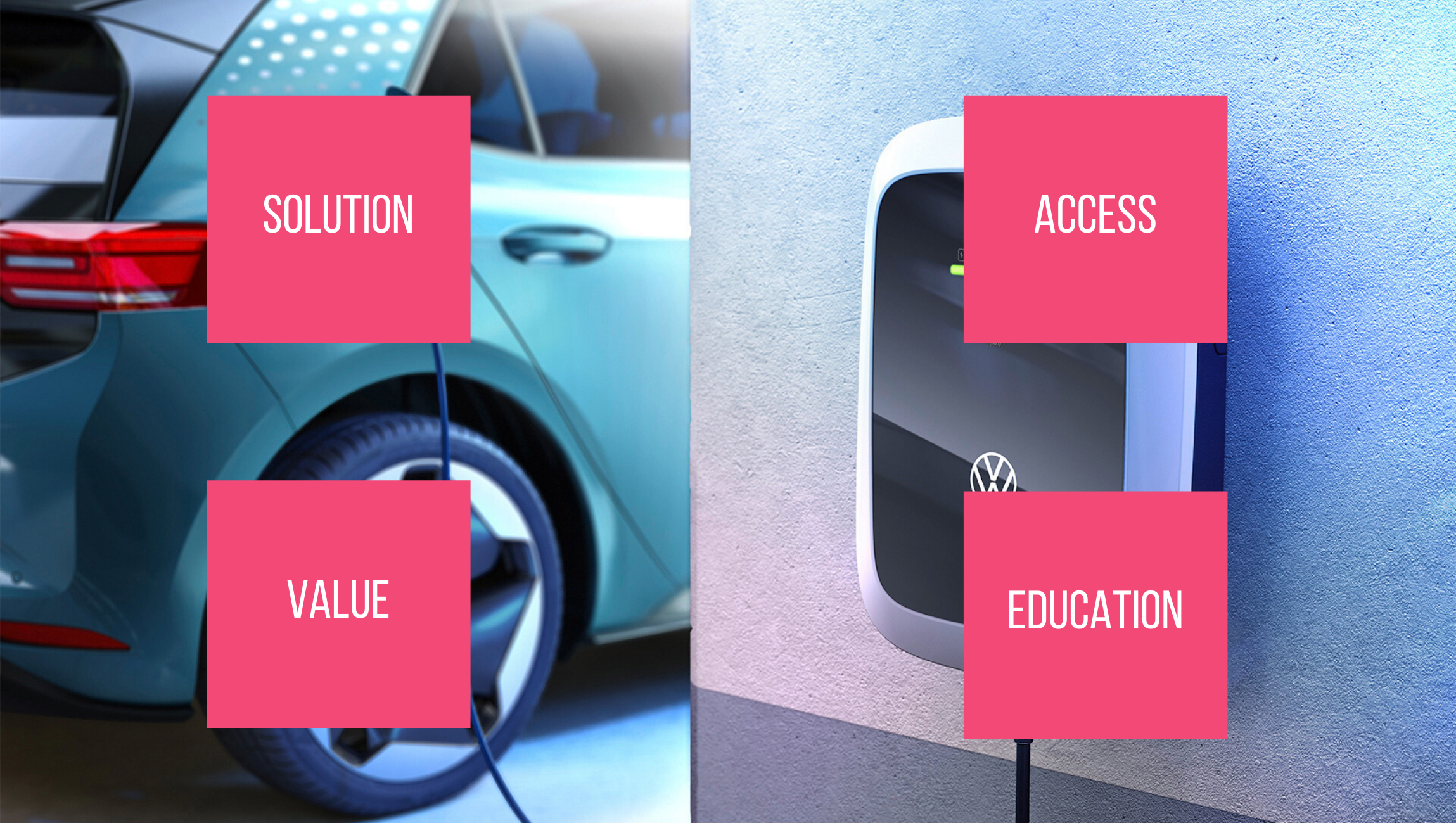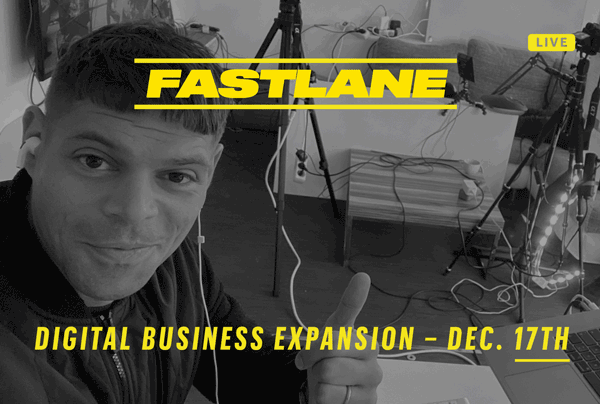Auto OEMs vs. utilities - who is going to win the race in EV charging?
E-Mobility triggers the convergence of two industries
A dualistic reflection of possible scenarios in three acts
Part I / III – reading time: 6 minutes
Author: Sebastian Crusius
INTRODUCTION
The substitution of the combustion engine with an electric powertrain not only shakes the automotive competition, but it also brings two industries closer together that have had few touchpoints over the last 100 years. Spiced up by the digitization of everything, the race is on for all energy-related services around the electric vehicle - with EV charging at the forefront.
This article reflects on two possible scenarios of the question of who will win the race in the emerging competition between car manufacturers and energy companies in this fledgling domain. As an outcome, we want to provide you with some ideas on how to play your cards to master the challenge.
The analysis is structured in three acts to be released separately, where the third one is a webcast in which we will have guests from both industries.
Structure
Part I
5 reasons why the auto OEMs hold the key to dominate the EV charging domain as vertical integrators
Part II
Utilities and their chance to leverage the access to existing customers
Part III
Live Webinar on November 19 - 11 a.m.: Expert Panel: Car OEMs vs. Energy Utilities
Part I
“The Volkswagen scenario”
Source: Volkswagen Newsroom
1. After ‘diesel-gate’, the world’s largest car company went all-in with the electron – and hardware is not their ultimate focus
According to Volkswagen, using electric mobility is the only way to achieve climate targets. Dr. Herbert Diess, a member of the board of management of the Volkswagen group, has been committed to this goal since taking office in Wolfsburg. As Germans are not known for half-measures, it is to be expected that the focus will not remain on electric vehicle hardware, but extend into infrastructure, software, services, and, ultimately, energy solutions. With the ID series, Volkswagen is following the one-stop-shop approach, offering its future customers everything from one single source, from hardware over leasing or financing to wallbox installation services to the electricity contract; the electricity used to power the vehicle at home and on the road. Less car and more energy ecosystem is also the approach of the electric car pioneer Tesla. Tesla has already had the connection between the PV system and the home storage battery in its portfolio for some time and will develop a trading platform for electricity in the future with its "Autobidder" system. This makes the Californian car manufacturer an electricity trader and enables it to predict prices and electricity demand.
2. Expect no further missteps: the top management managed to gather extensive experience in former positions at BMW
Today's top management team at Volkswagen is familiar with electric mobility from the perspective of an automobile manufacturer, together with its success factors. There is a solid pivot from the Chairman of the Board of the Volkswagen group, Herbert Diess, over the new Audi board member Markus Duesmann, to electric charging managers such as Thorsten Nicklass and Martin Römheld. Since the Volkswagen managers have experienced numerous do's and don’ts, especially during their time at BMW, we should expect that in today's significantly more mature electric mobility market, fewer missteps will be made. However, it remains a massive challenge to switch from their dusty hardware business to a domain where the key success drivers lie in the fields of software and service.
Source: Volkswagen Newsroom
DO YOU WANT TO RECEIVE MORE CONTENT LIKE THIS ARTICLE?
3. The SAVE strategy framework is being applied: Volkswagen We & energy ecosystem (Solution) + Availability through (in)direct sales channels (Access) + attractive product bundles and prices (Value) + emotional and digital communication (Education)
Solution: With the younger "We" brand, Volkswagen has already introduced a digital ecosystem with numerous solutions. The associated offerings such as "We Park", "We Share" and "We Charge" solve today's everyday problems such as cashless parking, sharing with electric vehicles and digital access to charging stations in Europe. On the basis of this portfolio, new energy services such as the installation of a charging station fit well into the energy supply of private customers at home. For this reason, services are offered that create longer-term customer loyalty, especially through recurring sales.
Access: In May 2020, VW dealers in Germany signed the new agency model for the sale of the ID family. This is a reaction to the increasing complexity of selling electric vehicles and the additional offers such as wallboxes or electricity contracts. After all, traditional car dealers are likely to be more "challenged" (in some cases perhaps even overburdened) by wallbox sales, so that Volkswagen is already using its own online shop for charging infrastructure products instead of relying exclusively on regional dealers in this field.
Bildquelle: Volkswagen Newsroom
Value: Volkswagen's own natural power supply is already being offered to supply private households with electricity. However, this offer will be even more interesting in the case of product bundles, as free or reduced prices for the kilowatt hour are offered in the vehicle price. This should motivate some electric vehicle customers to switch their private electricity supply to the Wolfsburg-based company's green electricity. A look at automotive accessories also reveals a price: While wallboxes as private charging stations for electric vehicles have only slightly decreased in price in recent years, market prices of around €580 have developed for entry-level models. With a price of €399, VW is raising the price level to a completely new level and giving electrical installers and energy suppliers a clear indication of the future hardware manufacturer in this segment.
Education: In terms of aesthetics, wallboxes to charge electric vehicles differ slightly, but electricity products do not. A car, on the other hand, provokes not only emotions but also memories, and for many people, stands for freedom in mobility. The Volkswagen brand world around the ID.3 market launch and the electrification of the group already uses emotional communication today. This is where we can expect a lot from CMO Jochen Sengpieh. The general sponsoring of the German national football team is probably just the beginning of the bang for future electric communication.
4. Selling (EV) electricity products and services is way easier than building cars. And auto OEMs own the very first customer touchpoint to the drivers
They are green, certified, and most likely to differ in their one-off and running costs or, in some cases, in exchange premiums. Otherwise, different logos and prices make electricity contracts quite easy to compare and exchange. Many energy suppliers have already painfully experienced this in recent years when their customers migrated to new players with strong brands. Today, even discounters like ALDI and LIDL sell their in-house electricity products, just as they sell mobile phone contracts. This makes it clear that these products, known as commodities, can also be easily sold online by the car manufacturer. Together with wallboxes and attractive financing offers, there are probably many reasons for consumers to switch to an electric vehicle at home to get a good, green electricity supply.
We have to face the fact that there is no proof that auto OEMs are capable of eventually monetizing one of their core assets: the first touchpoint to the driver when selling the car. The so-called “single sign-on” service ecosystem - intending to provide a full set of related services and products which is linked to one account or car - has been considered a critical puzzle piece for a long time. But, this is the time and opportunity for car manufacturers and dealers to prove that they have learned their lessons after many failures in the past when trying to sell complementary services.
5. A holistic view of the essential parts of the value chains for electric mobility and the single point of contact for mobility in the future
While many municipal utilities and energy suppliers still spend months calculating the initial costs for “mayor's charging points”, in recent years, Volkswagen has invested in players with a holistic approach to electric mobility. They founded the joint venture IONITY, invested in the EV charging interoperability market leader Hubject, the charging IT start-up has.to.be, the Stuttgart-based digital agency Diconium, and, most recently, a cooperation agreement was concluded with Ford to save billions in development costs for electric mobility and autonomous driving. Volkswagen is also investing billions in the US technology company Argo AI, in which Ford already holds ownership and development shares.
Source: Volkswagen Newsroom
Also, the Volkswagen group is now working significantly more substantially on concepts and solutions for all group brands to exploit better the volume advantages of the world's second-largest automobile manufacturer and future mobility top dog. In any case, the holistic portfolio is also ready for take-off in the (electric) mobility service sector. For public charging, Volkswagen has developed an app. under the WeCharge brand that allows users to charge at over 150,000 public charging points in Europe. This venture is comparable to offers from Plugsurfing, ChargeNow, Shell Recharge, and others. For charging at home, the wallbox and installation offers can already be ordered digitally. In conjunction with new rental, parking, and shuttle offers such as WePark, WeShare, LEASH, and MOIA, there is little to prevent full climate-friendly mobility with Volkswagen as the "single point of contact" from the supplier side. Then the ball is in the court of the Golf generation, among others, to take advantage of these offers.









